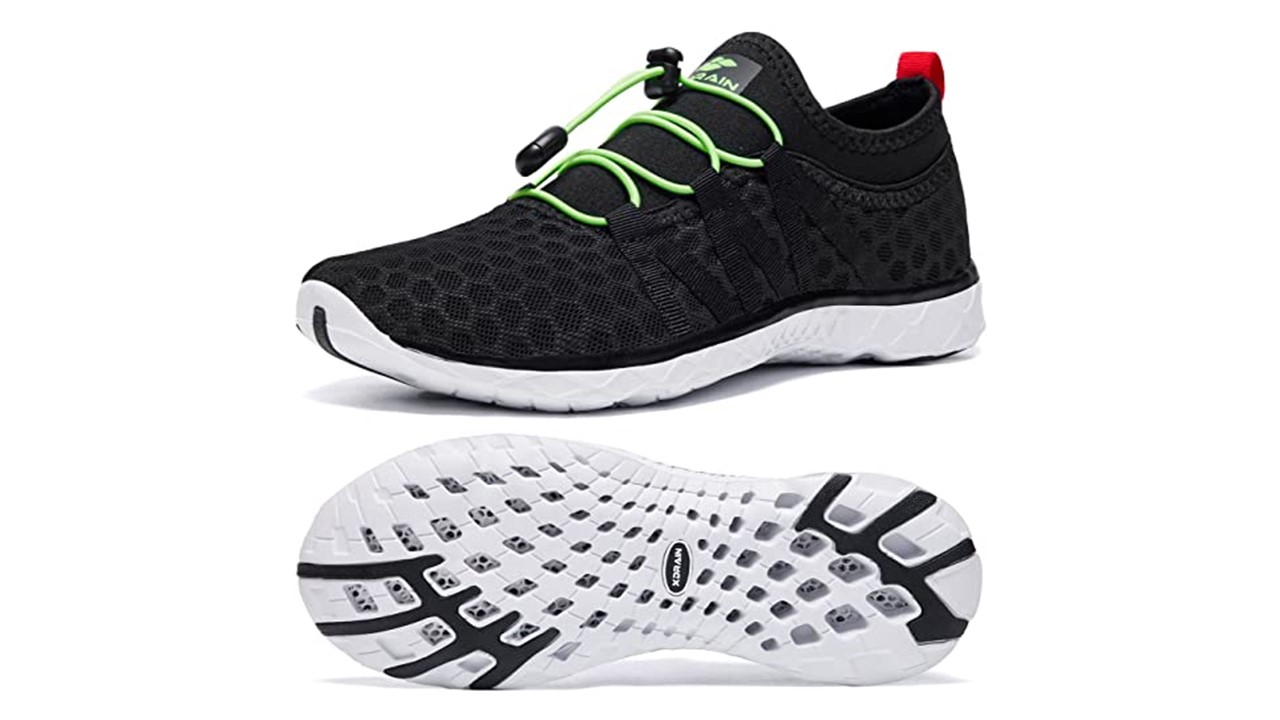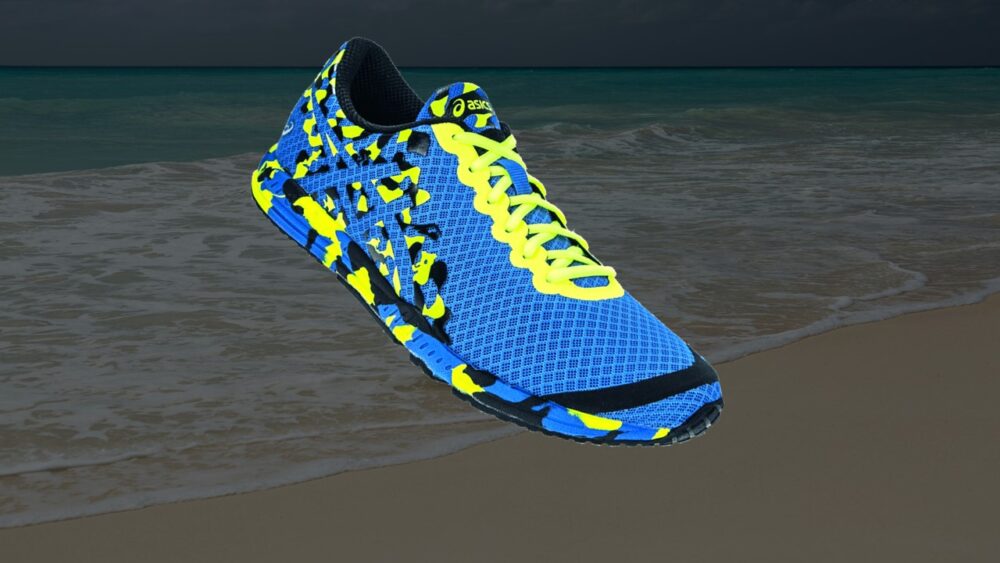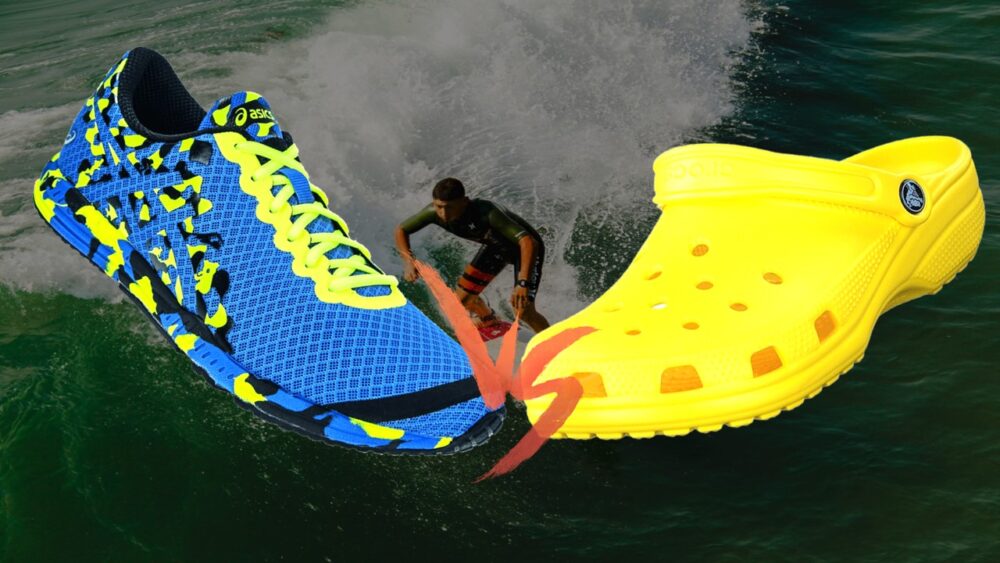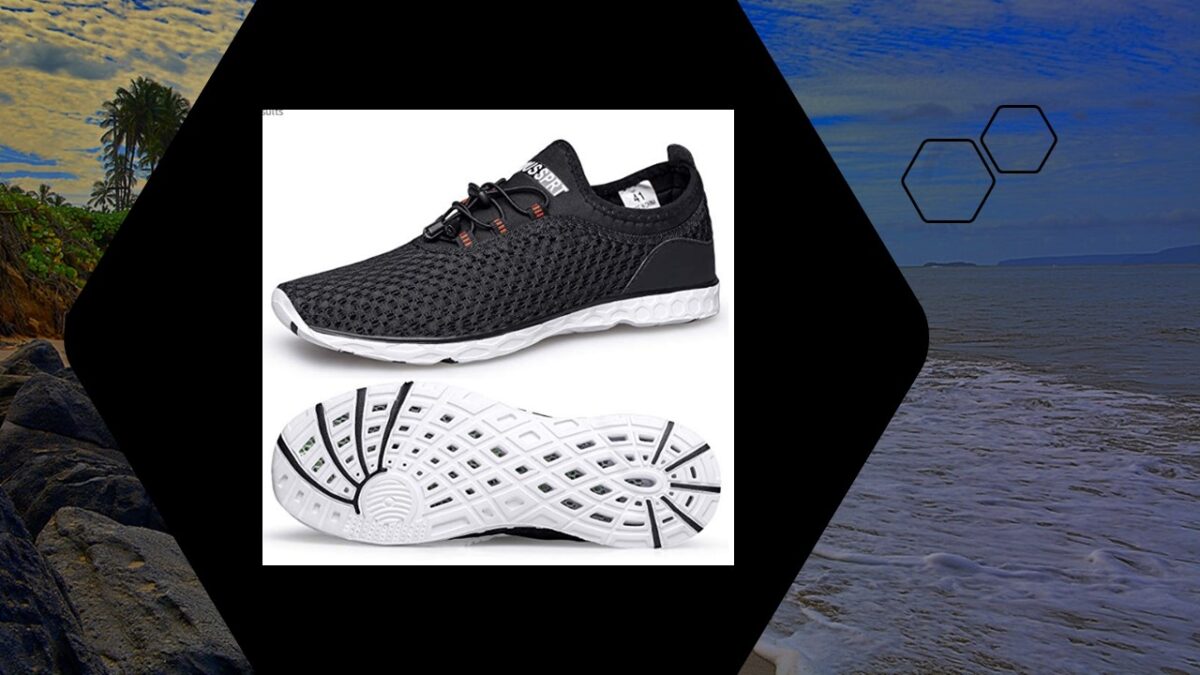Are Water Shoes Waterproof – Find Your Ultimate Wet Adventure Companion!
Are water shoes waterproof? Short answer: No, water shoes are not waterproof. They are designed to be water-resistant and to allow water to drain quickly, but they will not keep your feet completely dry in all conditions.
Water shoes are made with a variety of materials, but they typically have a mesh upper and a rubber sole. The mesh upper allows water to flow through the shoe and drain out the bottom. The rubber sole provides traction and protects your feet from sharp objects.
This article will discuss the difference between water-resistant and waterproof shoes, the different types of water shoes available, and how to choose the right water shoes for your needs. We will also provide tips on how to keep your feet dry while wearing water shoes.
Are Water Shoes Waterproof
Water shoes are not waterproof in the traditional sense of the word. They are designed to be water-resistant and to allow water to drain quickly, but they will not keep your feet completely dry in all conditions.
The main difference between water-resistant and waterproof materials is that water-resistant materials will repel water for a period of time, but they will eventually allow water to seep through. Waterproof materials, on the other hand, will completely prevent water from passing through, even under pressure.
Most water shoes are made with a mesh upper and a rubber sole. The mesh upper allows water to flow through the shoe and drain out the bottom. The rubber sole provides traction and protects your feet from sharp objects.
While the mesh upper allows water to drain out of the shoe, it also means that water can get into the shoe in the first place. Additionally, the rubber sole is not completely waterproof, so water can seep into the shoe from the bottom.
So, how waterproof are water shoes? It depends on the specific water shoes that you have and the conditions in which you are using them.
If you are standing in shallow water or walking through a wet meadow, your feet should stay relatively dry. However, if you are standing in deep water or walking through mud, your feet may get wet.
What Are Water Shoes? (Are Water Shoes Waterproof)
Water shoes are a type of footwear that is designed to be worn in wet environments. They are typically made with mesh or neoprene uppers and rubber soles. The mesh or neoprene uppers allow water to drain quickly, while the rubber soles provide traction and protect your feet from sharp objects.
Water shoes are used for a variety of activities, including:
Water shoes are a good option for any activity where you are likely to get your feet wet. They can help to protect your feet from cuts, scrapes, and other injuries. They can also help to keep your feet cool and comfortable in hot weather.
Here are some of the benefits of wearing water shoes:
- Protection: Water shoes can help to protect your feet from sharp objects, such as rocks, shells, and coral. They can also help to protect your feet from hot sand and pavement.
- Traction: Water shoes typically have rubber soles that provide traction on slippery surfaces, such as wet rocks and sand. This can help to prevent slips and falls.
- Drainage: Water shoes are designed to allow water to drain quickly. This can help to keep your feet dry and comfortable.
- Comfort: Water shoes are typically made with soft, breathable materials that are comfortable to wear.
If you are looking for a versatile shoe that can be worn in a variety of wet environments, water shoes are a good option to consider.
The Best Water Shoes (Are Water Shoes Waterproof)
Selecting the best water shoes is essential for enjoying your aquatic adventures to the fullest. Whether you’re planning a beach vacation, embarking on a river trek, or diving into water sports, the right pair of water shoes can make all the difference. Here are the best water shoes on the market:
Product Image | Product Name | Key Features | Rating | Price |
| ||||
| ||||
| ||||
| ||||
| ||||
| ||||
| ||||
| ||||
| ||||
|
Different Types Of Water Shoes Available (Are Water Shoes Waterproof)
There are many different types of water shoes available, each with its own unique features and benefits. Here is a discussion of some of the most popular types of water shoes:
1. Water Sandals
Water sandals are a popular type of water shoe because they are lightweight, comfortable, and easy to put on and take off. They also have open toes and heels, which allows for good ventilation and drainage.
However, water sandals may not provide as much protection as other types of water shoes, and they may not be suitable for all activities.
Pros
- Lightweight and comfortable
- Easy to put on and take off.
- Good ventilation and drainage
Cons
- May not provide as much protection as other types of water shoes.
- May not be suitable for all activities.
2. Water Shoes With Mesh Uppers
Water shoes with mesh uppers are another popular type of water shoe. They are similar to water sandals, but they have a mesh upper that covers the entire foot.
This provides more protection than water sandals, but it can also reduce ventilation. Water shoes with mesh uppers are a good option for activities such as swimming, kayaking, and hiking.
Pros
- More protection than water sandals
- Good ventilation and drainage
- Suitable for a variety of activities
Cons
- May not be as lightweight or comfortable as water sandals.
- Mesh upper can get dirty or torn easily.

3. Neoprene water shoes
Neoprene water shoes are the most water-resistant type of water shoe. They are made with neoprene, which is a material that is commonly used in wetsuits. Neoprene water shoes are a good option for activities such as swimming in cold water, kayaking, and rafting.
Pros
- Most water-resistant type of water shoe
- Good insulation for cold water
- Provides good protection for the feet.
Cons
- Can be less comfortable and breathable than other types of water shoes.
- May not be suitable for all activities.
4. Water shoes with Vibram soles
Water shoes with Vibram soles are a good option for activities where you need good traction, such as hiking and scrambling over rocks. Vibram soles are made with a durable rubber that provides excellent grip on wet and slippery surfaces.
Pros
- Excellent traction
- Durable and long-lasting
- Good protection for the feet
Cons
- Can be less comfortable and breathable than other types of water shoes.
- May not be suitable for all activities.
5. Aqua Socks
Aqua socks, also known as water socks or water shoes, are lightweight and flexible footwear designed for water-related activities. These snug-fitting, often form-fitting socks are made from quick-drying and breathable materials.
Aqua socks offer minimal protection and are ideal for activities like snorkeling, paddleboarding, or strolling along the beach.
They provide a barefoot-like feel while shielding your feet from hot sand, sharp rocks, and small debris, making them a comfortable and versatile choice for lighter water adventures.
Pros
- Aqua socks are lightweight.
- Flexible, and offer a barefoot-like feel.
- They provide basic protection against rocks and hot sand and are great for activities like snorkeling and paddleboarding.
Cons
- Limited support and durability.
- They may not be suitable for rugged terrains or prolonged walking.
6. Closed-Toe Water Shoes
Closed-toe water shoes are a type of water-friendly footwear designed to offer enhanced protection and support for various aquatic and outdoor activities. These shoes have a covered toe area, making them ideal for rugged terrains, river hiking, and activities that involve potential impact from rocks and debris.
They provide a balance between water drainage and protection, making them a reliable choice for adventures in challenging conditions.
Closed-toe water shoes often feature sturdy soles with reliable traction, making them well-suited for activities that require stability and surefootedness in wet environments.
Pros
- Closed-toe water shoes provide excellent toe protection, making them ideal for rocky terrains, river trekking, and activities that involve potential impact.
- They offer better stability and support.
Cons
- They may not be as breathable as open-toe designs and could be less comfortable in very hot conditions.
6. Water Hiking Shoes
Water hiking shoes are a specialized category of outdoor footwear designed to provide support, protection, and traction during hiking and water-related activities.
These shoes are constructed to handle both wet and dry terrains, making them ideal for adventures that include river crossings, creek hiking, and trails with water elements. Water hiking shoes often feature quick-drying materials, supportive soles, and durable construction.
They provide a superior grip on slippery surfaces and robust protection, including toe guards, to shield your feet from rocks and debris.
Their versatility and ability to keep your feet comfortable in both wet and dry conditions make them an excellent choice for outdoor enthusiasts seeking adventure in various landscapes.
Pros
- Water hiking shoes are a hybrid of hiking boots and water shoes.
- They offer sturdy ankle support, traction, and protection.
- Great for rigorous water hikes and adventures in challenging terrains.
Cons
- They can be heavier and less breathable than other water shoe types, which might affect comfort during extended use.
7. Diving Booties
Diving booties, also known as dive boots, are specialized footwear designed for use in scuba diving and other water sports. These booties are typically made from neoprene, a synthetic rubber material that offers thermal insulation and protection against cold water.
Diving booties have a snug and secure fit to ensure that your feet stay comfortable and warm in cold water environments. They often feature a durable sole with textured patterns for enhanced grip on wet and slippery surfaces.
Diving booties are essential for divers as they provide thermal protection, prevent chafing from fins, and offer stability when walking on rocky or uneven underwater terrain.
They come in various thicknesses to accommodate different water temperatures and are an essential part of a diver’s gear for safety and comfort.
Pros
- Diving booties provide exceptional protection against rocks, sharp coral, and marine life while offering a snug and secure fit.
- They are designed for scuba diving and other underwater activities.
Cons
- Less versatile for everyday water activities outside of diving.
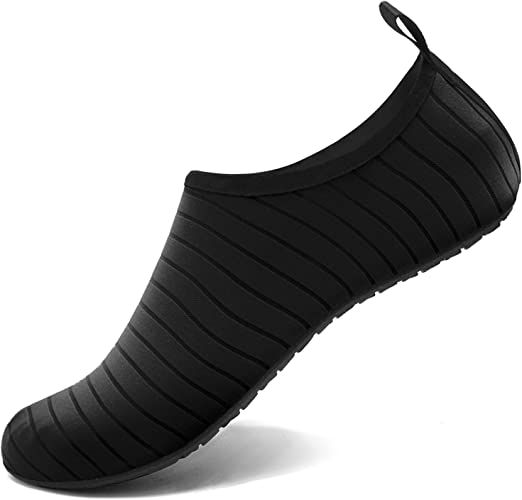
8. Barefoot Water Shoes
Barefoot water shoes, also known as minimalist water shoes, are a unique type of aquatic footwear that aims to provide the sensation of being barefoot while offering some protection for your feet.
These shoes typically have a minimalistic design with a thin, flexible sole and lightweight, quick-drying materials. Barefoot water shoes are ideal for activities like yoga on the beach, stand-up paddleboarding, and beach running.
They allow for natural foot movement and provide a barefoot-like feel, allowing you to connect with the ground while shielding your feet from hot sand, sharp shells, and small debris.
While they offer minimal protection and support compared to traditional water shoes, barefoot water shoes are favored by those who seek a close-to-nature experience in and around the water.
Pros
- Barefoot water shoes offer a minimalistic design for a natural feel.
- They are suitable for activities like yoga, stand-up paddleboarding, and beach running.
Cons
- Limited protection and support, so they may not be ideal for rugged terrain or activities requiring more foot security.
It’s important to choose the type of water shoe that aligns with your intended activities and the level of protection, support, and comfort you need.
Difference Between Water-Resistant And Waterproof Shoes (Are Water Shoes Waterproof)
Water-Resistant Shoes
Water-resistant shoes are designed to repel water to a certain degree, but they will eventually allow water to seep through.
This is because water-resistant shoes are typically made with materials that have small pores. Water molecules can eventually pass through these pores, especially if the shoes are exposed to water for a long period of time or if the water is under pressure.
Waterproof Shoes
Waterproof shoes, on the other hand, are designed to prevent water from passing through them completely. This is typically achieved by using a waterproof membrane, such as Gore-Tex, which is inserted between the outer and inner layers of the shoe.
Waterproof membranes have pores that are too small for water molecules to pass through, even under pressure.
| Aspect | Water-Resistant Shoes | Waterproof Shoes |
| Water Protection | Repel water to a certain degree, but will eventually allow water to seep through | Prevent water from passing through completely |
| Typical Use | Light rain, splashes, casual water activities | Prolonged exposure to water, underwater activities. |
| Materials | Treated fabrics, sometimes natural water-resistant materials | Waterproof membranes, sealed seams, specialized materials |
| Breathability | Often more breathable | May be less breathable, can lead to sweating in hot conditions |
| Weight | Typically lighter | May be heavier due to construction and materials |
| Durability | Suitable for casual use, may not withstand harsh conditions | Sturdier and designed for prolonged use in harsh conditions |
| Comfort | Generally comfortable. | Comfortable but may be less so in extremely hot weather |
| Traction | Varies but often good for water activities | Reliable traction for various terrains and wet surfaces. |
| Cost | Typically more budget-friendly | May be more expensive, quality waterproof technology can increase the price |
| Examples | Water sandals, water shoes with mesh uppers. | Rain boots, hiking boots with Gore-Tex membranes. |
A Guide To Choosing The Right Water Shoes For Your Specific Needs (Are Water Shoes Waterproof)
Choosing the right water shoes for your specific needs requires considering various factors to ensure they match your activities and preferences. Here’s a guide to help you make an informed decision:
1. Understand Your Activities
Begin by identifying the specific water-related activities you’ll be engaging in. Are you planning to go kayaking, hiking in wet conditions, beachcombing, or simply strolling along the shore? The type of activity will dictate the level of protection and support you need.
2. Determine the Water Exposure
Assess the level of water exposure you’ll encounter. Will you be in shallow water, deep water, or constantly immersed? For deep water or underwater activities, opt for waterproof shoes to keep your feet dry.
3. Consider the Terrain
Evaluate the terrain where you’ll use the water shoes. Is it rocky, sandy, or uneven? For rugged terrain, closed-toe water shoes or water hiking shoes with ample toe protection and sturdy soles are a good choice.
4. Choose the Right Type
Select the appropriate type of water shoe based on your activities:
- Aqua Socks: For light water activities like snorkeling.
- Water Sandals: Versatile for various activities with good traction.
- Closed-Toe Water Shoes: Great for rocky terrain and water hiking.
- Water Hiking Shoes: Suitable for challenging terrains.
- Diving Booties: Designed for scuba diving.
- Barefoot Water Shoes: Ideal for minimalistic, barefoot-like feel.
- Mesh Uppers: Lightweight and breathable for casual water use.
5. Consider Comfort
Ensure your water shoes provide comfort for extended wear. Look for cushioning, arch support, and a good fit. Consider the shoe’s breathability for hot conditions.
6. Check Traction
Traction is crucial to prevent slipping on wet surfaces. Look for water shoes with slip-resistant soles or specialized treads for your chosen activities.
7. Material and Durability
Assess the materials used in the water shoes. High-quality materials enhance durability and performance. For rugged use, consider reinforced soles and sturdy construction.
8. Waterproof vs. Water-Resistant
Decide whether you need waterproof or water-resistant shoes based on the level of water exposure in your activities. Waterproof shoes provide complete protection, while water-resistant shoes repel water to some extent.
9. Size and Fit
Ensure you choose the right size and fit for your feet. Tight-fitting water shoes can be uncomfortable, while loose ones may lead to blisters. Follow the manufacturer’s sizing recommendations.
10. Consider Style and Aesthetics
While function is paramount, you can also consider the style and aesthetics of the water shoes to match your personal preferences.
11. User Reviews
Read user reviews and seek recommendations from people who have used the same water shoes for similar activities. Real-world experiences can provide valuable insights.
12. Budget
Set a budget that aligns with the features and quality you need. Keep in mind that investing in a high-quality pair can provide long-lasting performance.
13. Try Before You Buy
If possible, try on the water shoes before purchasing, or order from retailers with a good return policy to ensure they fit comfortably.
RELATED: Are Water Shoes Necessary – Unlock the Secrets And Get the Facts
The Bottom Line On Are Water Shoes Waterproof
So, are water shoes waterproof? No, water shoes are not waterproof. They are designed to be water-resistant and to allow water to drain quickly, but they will not keep your feet completely dry in all conditions.
However, water shoes are still a great option for many activities, such as swimming, kayaking, and hiking. They can help to protect your feet from sharp objects and hot sand, and they can also help to keep your feet cool and comfortable.
When choosing water shoes, it is important to consider the activities that you will be using them for and the conditions in which you will be using them. You should also choose water shoes that fit well and are made from high-quality materials.










